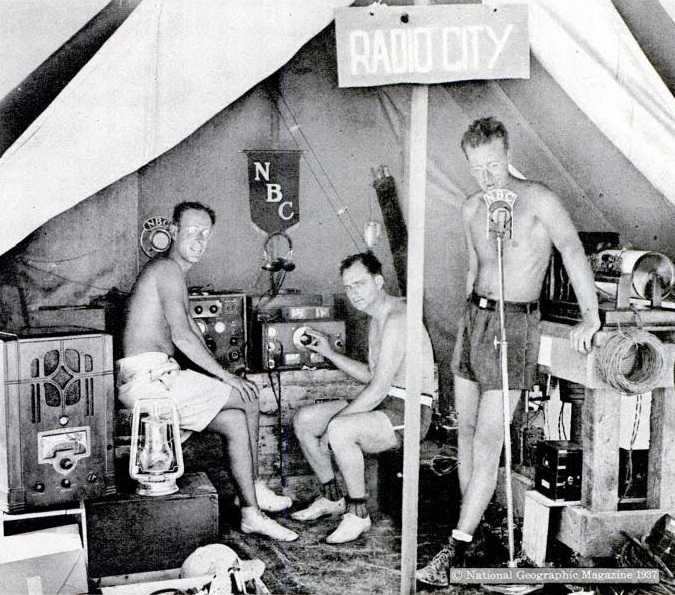 This picture appeared in an RCA advertisement in Life magazine 80 years ago today, September 5, 1938. It shows NBC engineers Marvyn Adams and W.R. Brown along with NBC announcer George Hicks broadcasting live from Canton Island (sometimes spelled Kanton) in the South Pacific.
This picture appeared in an RCA advertisement in Life magazine 80 years ago today, September 5, 1938. It shows NBC engineers Marvyn Adams and W.R. Brown along with NBC announcer George Hicks broadcasting live from Canton Island (sometimes spelled Kanton) in the South Pacific.

1937 Eclipse from Canton Island. Wikipedia image.
They were on the island as part of a joint expedition by the U.S. Navy and the National Geographic Society for the solar eclipse of June 8, 1937. The NBC eclipse coverage was transmitted from this “ultra-high frequency transmitter” to the USS Avocet anchored at the island, and from there to the RCA station at Point Reyes, California, where it went by wire to the NBC Blue Network.
According to the ad, the island would possibly “play an important role in transpacific air transport service,” a prophecy which proved true, as the island served as a stop for PanAm’s Pacific Clipper service to New Zealand, which ran from 1940 until the war, and then again from 1946.
The Navy-National Geographic expedition, in addition to observing the eclipse, placed a monument on the island to bolster the U.S. claim to sovereignty over the island. This was disputed by the British, who also had a ship anchored for the eclipse. Reportedly, the British ship, the HMS Wellington, fired a shot across the bow of the USS Avocet, which reciprocated. The two commanders called a truce pending further instructions from their command, and the two parties observed the eclipse together.
During the war, the U.S. Navy built a 6230 foot airstrip on the island, which was defended by as many as 1200 combat forces, but was never attacked by Japan. The island now forms part of the Republic of Kiribati. As of 2010, it had a population of 24.
The island was most recently in the news that year after a yacht stopped en route from Honolulu to Fiji and discovered that the islanders were desperately short of food, an expected supply ship never having arrived. The islanders had been living on fish and coconuts for several months, and the yacht owner used his satellite phone to contact the U.K. Coast Guard, which contacted the U.S. Coast Guard to arrange relief supplies.
